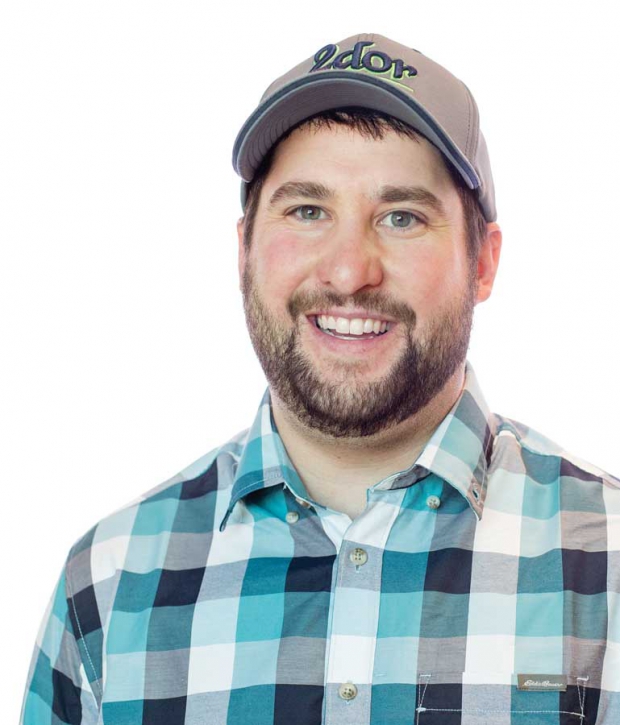 grower / Grandview, Washington
grower / Grandview, Washington
age / 28
crops / Apples, cherries, wine and juice grapes
business / Owner Rustic Vineyards, 2dor Wines
other experience / Walla Walla Community College, viticulture degree
How did you start in farming?
When I was young and my grandfather passed away, it put a lot of pressure on my dad and uncle to support their family of eight kids and my grandmother. They got to work digging posts and planting grapes and trying to expand the farm and built it to this big operation now.
I always felt I was going to do it, and Dad loved taking me out, working the farm. A while back I found a note I wrote in kindergarten that said, “I love irrigating with my Dad.” It’s a blessing to be part of a four-generation family farm. You are continuing a family legacy and I really want to do that the best I can.
Which projects are you working on?
I recently purchased my own land, 100 acres of wine grapes that was the part of the former historic Otis Vineyards.
When I started out, I thought there was no way I would be able to start a winery, yet all it took was a quick conversation with my winemaker to get going on it.
One day we were talking, and I wanted to make it happen. He just said, “I want to make your wine. Bring me the grapes, and I’ll make it, and you can start your own label. Then we will go from there.” So now, here we are with a label that’s been approved and it’s been fun.
I’ve included my grandmother on what the label is going to say on the back. I want to pay respect to her on the label. She always wished that Grandpa could have fulfilled his dreams of starting a winery.
What is your family’s succession plan?
We just went through the Northwest Farm Credit succession meeting, and I would highly recommend it. We learned so much. I’m 28 and my Dad is 60.
That meeting taught me that even I need to look ahead for my kids—and I haven’t even had any yet—but I’m going to start a succession plan when I’m 40. One of the main things I’ve learned from this is the business is your main asset.
That’s what you are protecting, so you’ve got to make the right moves leading up to the transition.
What helped you get where you are?
Getting out there and doing it yourself and handling the budget. With the Otis deal I ran all the numbers myself, because this was going to be my own money.
I ran figures as if I had a terrible year or if I have a great year; where am I going to put my capital? A lot of what I’m doing now is budgeting in all honesty. You need to be ready to run all kinds of scenarios, then take a guess and hope you make the right decision.
Which growing techniques excite you?
What I’ve loved about farming is that there isn’t one right or wrong way to do things. What I’m trying to do with my orchards is to limit my input to get the most output. I like the V-trellis and some of the new high-density systems, but they are really expensive to put in.
I’m kind of taking a step back toward the tall-spindle. I like that because it doesn’t need as much input. I’ve still got a lot of trees per acre; it’s a lot more simple to run and manage. I think it’s more efficient and will make me more money in the long run because of quick returns.
Going this direction could be considered a little old-school compared to what’s going on, but I’ve run the numbers, and I’m confident in the system.






Loved listening to Sean talk about the family farm and how excited he is about what is happening now and what his plans for the future are. You will continue to carry on the family legacy that Grandpa started so many years ago.